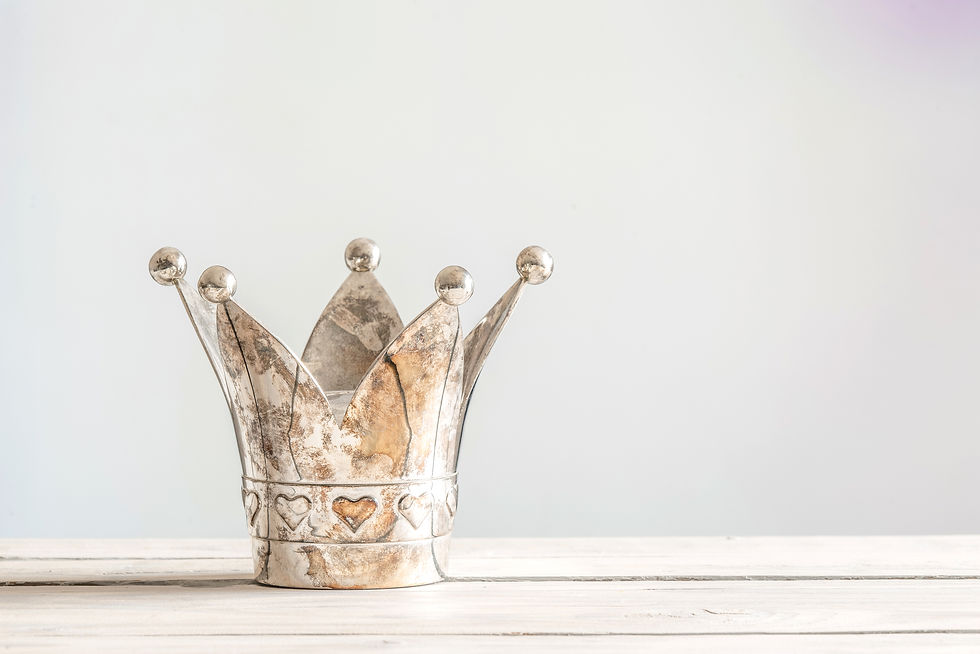GUEST POST: The Princesses Who Were Never Saved by Claerie Kavanaugh
- Kim

- Jul 31, 2017
- 4 min read
Hello everyone! Happy Monday! I don't know about you, but I've got lots of goals and writerly tasks that I hope to accomplish this week! Mondays always feel kinda daunting, but I woke up with a smile this morning, and I'm determined to keep that smile while I tackle my to-do list!
And to help keep that good Monday vibe going, I've got another guest post for you today! Fellow writer Claerie Kavanaugh is here to share with the us the importance of having a solid character arc for your story's villain! Take it away, Claerie!

The Princesses Who Were Never Saved by Claerie Kavanaugh
One of my favorite quotes is “Evil Queens are just the princesses who were never saved.” I don’t know who originally said it, but I found it because of the television show Once Upon a Time, and it has since become my motto for writing villains. All too often, I see books where the author has created a really incredible and dastardly villain, but they never, or very briefly explain how they came to be that way.
At first glance, this may not seem like much of a problem, because well, villains are called villains for a reason. We’re not supposed to be rooting for them, so why do we need to know their life story? Well, technically, we don’t. But the goal of the antagonist is to challenge the hero. To make things harder for them so they come out changed, for better or for worse, at the end of the story. How do we as readers truly feel that our hero is challenged, if we barely know the adversary they are to go up against?
I don’t know about you, but there’s nothing I dislike more in a book than a villain who’s just blah. Even villains we love to hate have a character arc. So, as writers, how do we establish that arc? Well, it boils down to this: make sure they have a past that differs from their future thanks to the influence of the hero. What does that mean? Let’s break it down a bit.
Who Were They Before?
What I love most about the above quote is that it reminds me that, no matter how evil or twisted a villain may seem, at the end of the day, they are only human (or, you know, fairy, robot, unicorn etc.) That, I think, is the most important thing to remember when writing a villain. Above all else, they are people. That means they have flaws, and histories, and families, and secrets and fears just like every other character in your world.
Even if all of that information doesn’t make it onto the page, you as the author should know the villain just as well, if not better, than you know your hero. Why? Because equally matched opponents with dynamic character arcs who both have something to lose should one of them fail is a lot more engaging to read about than a hero who has everything to gain and a villain with nothing to mourn.
Which of these would you rather read about: A young girl fighting to rescue her mom and dad from the clutches of a prison guard whose general is holding his own family's lives over his head if he doesn’t go through with her parents’ executions, OR
A young girl fighting to rescue her family from a prison guard who’s only ambition is to rise higher in the ranks of the army, so he obeys his commander’s every order?
Both could make compelling stories in their own ways if done right, but I personally prefer the first one. Why? Because the stakes of the characters are more equally matched, which makes them both that much more compelling. The first option also gives the prison guard more internal struggle, which makes the stakes higher for both of them.
How Will the Hero Change the Villain?
Remember how I said the antagonist's job is to make it harder for the hero to reach their goal? The same is true in reverse. How each character changes throughout the story is known as their arc, and every single character has one, even your villain.
Don’t believe me? Both of the above scenarios is that they each present unique opportunity for the villain to learn and grow as much as the hero.
Perhaps in the first scenario, the hero learns the “good” and “evil” when it comes to war isn’t as black and white as she always thought. The guard, in turn, will have to weigh whether saving another family is worth risking his own. In the second scenario, perhaps the hero sees the harsher, more brutal side of war through the guard, while the guard learns there are some things more important in life than protecting his own wellbeing.
Quick Tip: This character sheet is a great place to start figuring out who your villain is, which will in turn help you determine who you want them to be.
I hope this was helpful to all my writer friends out there. Thank you so much Kim, for letting me take over your blog. If you have any more questions or just want to say hi, feel free to tweet me, message me on Facebook, or say hi on my website. As always, keep making magic, word weavers!
Find Claerie:

Twitter: https://twitter.com/claeriekauthor


























Comments